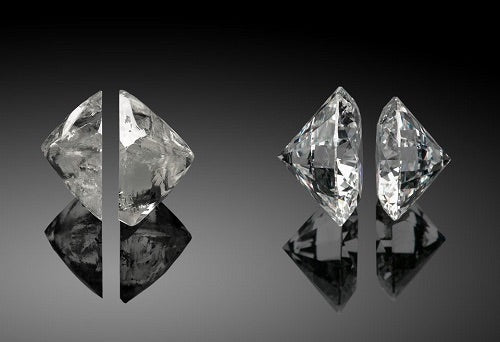Diamonds, the sparkling gems adored for their brilliance and rarity, have held a special place in human culture for centuries. But are they truly as rare as we’ve been led to believe? In this article, we’ll delve into the fascinating world of mined diamonds, uncovering the truth behind their perceived scarcity and exploring the implications for consumers and the environment.
Introduction
What Are Mined Diamonds?
Mined diamonds, as the name suggests, are diamonds extracted from the Earth’s crust through mining processes. These precious gems are formed deep within the Earth under high pressure and temperature conditions over millions of years. Once discovered, they are extracted from mines and undergo various processes before reaching the market.
Common Perception of Diamond Rarity
For decades, diamonds have been marketed as symbols of luxury and exclusivity, with their rarity touted as a key selling point. The idea of owning a rare and valuable gemstone has fueled consumer demand and driven prices to astronomical levels. But is this perception of rarity rooted in reality?
The Reality of Mined Diamonds
Abundance of Mined Diamonds
Contrary to popular belief, mined diamonds are not as rare as one might think. In fact, the global diamond mining industry produces millions of carats of diamonds each year, contributing to a significant supply of these precious stones. With advances in mining technology and exploration techniques, new diamond deposits continue to be discovered, further increasing the supply.
Mining Processes and Output
The process of extracting diamonds from mines involves extensive labor and resources. Large-scale mining operations, often located in remote and environmentally sensitive areas, utilize heavy machinery and explosives to access diamond-bearing ore. Despite the intensive mining efforts, the output of diamonds remains substantial, challenging the notion of their scarcity.
Debunking the Rarity Myth
Understanding the Diamond Industry
To understand why diamonds are perceived as rare, it’s essential to examine the dynamics of the mined diamonds are not rare. A handful of major companies control the majority of the world’s diamond production and distribution, exerting significant influence over prices and market perceptions. Through strategic marketing campaigns and controlled supply chains, these companies have perpetuated the myth of diamond rarity to maintain high prices and profit margins.
Market Manipulation and Perception
The perceived rarity of diamonds is largely a result of clever marketing tactics rather than inherent scarcity. By creating an aura of exclusivity and glamour around diamonds, the industry has successfully shaped consumer perceptions and preferences. The notion of rarity has become deeply ingrained in popular culture, driving demand and maintaining the status quo.
Environmental Impact of Diamond Mining
Ecological Consequences
The environmental impact of lab diamonds is substantial and far-reaching. Large-scale mining operations disrupt ecosystems, destroy habitats, and contribute to deforestation and soil erosion. The use of heavy machinery and chemicals further exacerbates environmental degradation, leading to long-term ecological consequences.
Social Impact
In addition to environmental concerns, diamond mining also has significant social implications. Many mining communities suffer from exploitation, labor abuses, and displacement, exacerbating poverty and inequality. The quest for profit often takes precedence over the well-being of local populations, highlighting the ethical challenges inherent in the diamond industry.
Alternatives to Mined Diamonds
Rise of Lab-Grown Diamonds
Amid growing concerns about the environmental and ethical impact of diamond mining, an alternative has emerged: lab-grown diamonds. These diamonds are produced in controlled laboratory settings using advanced technology that replicates the natural diamond-growing process. Lab-grown diamonds offer a sustainable and ethical alternative to mined diamonds, without compromising on quality or beauty.
Sustainability and Ethical Considerations
Lab-grown diamonds are inherently more sustainable and ethical than their mined counterparts. By eliminating the need for mining, they reduce environmental damage and minimize the social impact on mining communities. Additionally, lab-grown diamonds are free from the ethical concerns surrounding conflict diamonds, providing consumers with peace of mind and transparency.
Consumer Awareness and Choice
Importance of Informed Decisions
As consumers become increasingly aware of the environmental and ethical issues associated with mined diamonds, they are demanding more transparency and accountability from the diamond industry. By educating themselves about the origins of diamonds and considering alternative options, consumers can make informed decisions that align with their values and preferences.
Shifting Trends in Diamond Purchases
There is a growing trend towards sustainable and ethical consumption, with many consumers opting for lab-grown diamonds or other ethically sourced gemstones. This shift reflects a broader movement towards conscious consumerism and a rejection of traditional notions of luxury and status. As awareness continues to spread, the demand for mined diamonds may decline, prompting the industry to adapt to changing preferences.
Conclusion
In conclusion, the perception of mined diamonds as rare and precious gems is largely a myth perpetuated by the diamond industry. While diamonds hold sentimental value for many, it’s essential to recognize the environmental and ethical implications of their production. By exploring alternative options such as lab-grown diamonds, consumers can make choices that reflect their values and contribute to a more sustainable and ethical future.






